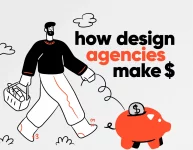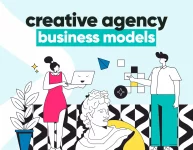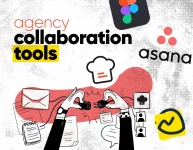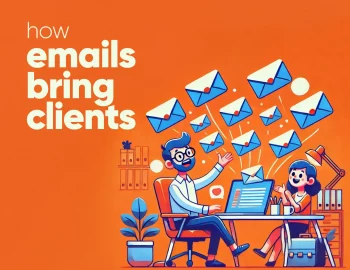Going from solo creative to agency founder can feel like stepping into a whole new world, and honestly, it can be truly overwhelming. There’s so much to it that it leaves you wondering how exactly to start a design agency and what the first step is.
Having the dream and aspirations about it is one thing, but when suddenly you’re not just designing logos or websites, but making hiring decisions, managing projects, setting up contracts, and chasing invoices…you might find yourself trying to keep your creative spark alive through it all.
Don’t worry, though. This guide is here to walk you through the real stuff – the business part, the branding moves, the hiring calls, and the client-building strategies that actually work. No fluff, just practical advice to help you go from freelancer to founder without losing your mind or your weekends.
1. From solo to studio: What it really means to start a design agency
Freelancing means doing it all – designing, managing clients, sending invoices. You are the business. But starting a design agency? That’s a whole new game. You’re not just delivering great work anymore – you’re building a system that can deliver great work at scale, with a team, a vision, and a brand that’s bigger than you alone.
This shift means stepping into a new role: from creative doer to creative leader. You’ll still use your design instincts, but now they’ll guide strategy, shape your team, and influence how your agency shows up in the world.
Sure, it’s a little intimidating – more moving parts, more responsibility. But here’s the good news: you already have what it takes. The same creativity, problem-solving, and drive that built your freelance career? That’s exactly what you’ll use to grow your agency.
2. Set your foundation: Legal, financial & operational setup
Before you start building a creative empire, the paperwork’s gotta be in order. Glamorous? Not quite. Necessary? Absolutely.
Step 1: Start by choosing a business structure that suits your plans
LLC, S-Corp, or even a sole proprietorship – think of it like picking a frame for your agency – it shapes everything from taxes to liability. LLCs are a popular choice for their flexibility and protection, but S-Corps can save on self-employment tax once income grows. When in doubt, grab an hour with an accountant or a legal pro – it’s a worthy investment.
Step 2: Register, license, and separate your finances
Next, it’s time to make it official: register your business name with your state, check if you need a local license, and apply for an EIN (free via the IRS).
Then open a dedicated business bank account – no more mixing coffee money with client deposits. Speaking of, get friendly with basic bookkeeping and consider using tools like QuickBooks, Wave, or FreshBooks to help you stay on top of bookkeeping, invoicing, and tax prep from day one (and keep your finances from turning feral).
Step 3: Protect yourself with contracts & insurance
Now that you have a registered company, contracts are your creative safety net. A good contract outlines the project scope, timeline, payment terms, and revision rounds. It’s just that when you have it in writing, it’s a different game. Platforms like Bonsai or Fiverr Workspace offer templates tailored to creative work.
Also, add business insurance for that extra layer of peace of mind, because even dream clients can ghost or get weird.
Toolkit Snapshot:
- Entity Setup: Stripe Atlas, Clerky
- Finance: QuickBooks, FreshBooks, Wave
- Contracts & Proposals: Bonsai, Fiverr Workspace
- Insurance: Hiscox, Thimble
- Admin Automation: Dubsado, HoneyBook
Pro Tip: Automate recurring invoices and proposals early – I promise you will thank yourself when you’re juggling multiple clients.
Bonus thought: A simple business plan can go a long way
Not every creative agency founder needs a 50-slide deck and a SWOT analysis. But a one-page plan? That’s certainly a roadmap, too, and an easily made one. Outline your goals, target clients, service focus, and revenue streams. It’ll help you make sharper decisions, attract collaborators, and stay grounded when things (inevitably) get chaotic.
With these essentials in place, you’re not just a creative, you’re a legit business. Let’s move on to making it look as solid as it now stands.
3. Craft a strong design agency brand that reflects your vision
Now comes the fun part – branding your brand.
The first point in your brand strategy is defining your mission, values, and personality – these are the core threads that’ll run through everything from proposals to presentations. Then comes the naming game. Choose something that’s memorable, scalable, and doesn’t box you into a niche you’ll outgrow in two years.
With the foundation laid, design your visual identity: logo, typefaces, color palette, and tone of voice. Keep it cohesive, not cookie-cutter.
And then, time for your website. Include your services, portfolio, contact details, and about information, all presented within the company’s visual guidelines you have already come up with.
And if your design agency’s portfolio is still a little slim, no worries – at the start, you can just highlight freelance work, collaborative projects, or even hypothetical case studies that reflect your style and skill.
Freelancer to Founder Site Makeover Ideas:
- Reframe solo projects as “studio-led solutions.”
- Replace “I” with “we” – even if it’s you as a designer + your developer friend for now.
- Add structure: Think process visuals, testimonials, and value-driven messaging.
Because strong brands don’t just show up – they show off, with intention and clarity.
4. Define your services clearly
If everything’s an option, nothing stands out. The key is to package your services like a pro – not just for clarity, but for scalability.
Bundle smartly: pairing brand identity + web design into a “Startup Launch Kit” makes your offer easier to sell (and easier for potential clients to say yes to). Create tiered packages or retainers so you’re not constantly reinventing the wheel or chasing overdue invoices.
For example, you can create bundles like:
- Starter Pack: Brand identity + one-page website
- Growth Pack: Full visual identity + multi-page UX site + SEO
- Retainer: Ongoing design support, priority access, and monthly strategy calls
Most people will be more willing to pay for a package even if they weren’t looking for it in the first place than to look for services in a few different places.
5. Build your dream team (without breaking the bank)
No one builds a creative agency alone forever. But hiring smart? That’s the real superpower.
When you see the signs that it’s time to get help, start small: freelance collaborators or part-timers can give you breathing room without the full-time payroll pressure.
Choose chemistry over credentials. The best hires get your vision, vibe with your workflow, and elevate your creative standards. Start with high-impact roles: a solid developer, a sharp project manager, or a junior designer to help with production tasks.
And if you’re feeling worried about managing other people, here you’ll find some really helpful tips – How to Manage a Creative Team – Effective Strategies For Every Situation.
6. Get your first design agency clients (and keep them coming)
Freelancing gave you your start – now let it give you your first few wins as a design agency. The secret? Reposition what you’ve already done as agency-level impact.
Step 1: Reintroduce Yourself with Confidence
You’re no longer just you, you’re leading a brand. Update your online bios, email signature, and LinkedIn headline to reflect the shift. Your past clients may not know you’ve leveled up until you tell them.
Step 2: Turn Old Work Into Strategic Case Studies
Don’t just show pretty designs – tell a quality story. What was the client’s goal? What challenges did you solve? How did things go for both of you after launch? Structure each case study to speak to your ideal audience (for example, startups that want to grow fast and look legit).
Step 3: Position for Your Targeted Businesses
Founders love clarity and speed. Package your services around results, not deliverables – think “brand launch in 30 days” or “UX revamp to boost conversions.” Speak their language and address their pain points, not just your process.
Step 4: Market Smarter, Not Louder
- Referrals: Ask past clients if they know others who need branding or web help.
- Strategic Partnerships: Team up with development agencies, SEO consultants, or marketing firms that serve similar clients as you.
- Direct Outreach: Cold emails still work – especially if you include a relevant insight or mini audit.
- Social Proof: Use testimonials and client logos wherever you can – email footers, your site, proposals.
- Community Presence: Be the helpful voice in online groups and events, chat channels, or wherever your community is.
- Bonus points for showing up in real life: local events, online groups, and founder meetups are ripe with opportunity to find clients (certainly less competition than Instagram) and build strong relationships.
Here are two quick pitch scripts you can use:
- “Hey [Name], I’ve launched a design agency focused on [your area of expertise]. Would love to support you or anyone you know looking to level up their brand or website!”
- “Hey [Name], I wanted to share some exciting news – I’ve officially launched my own design agency. We specialize in helping startups stand out with strategic branding and UX-driven websites. If you or someone in your circle is working on a new product or brand, I’d love to help make it shine!”
7. Project management and communication systems that scale
Behind every “wow” client experience is a project that didn’t fall apart behind the scenes. Want to have it – time to build systems that grow with you.
Use tools like Notion, ClickUp, Kitchen.co, Slack, and Loom to run your projects and work collaboratively like a bigger team. Clear workflows (from discovery to delivery) keep everyone aligned and on time.
Client portals give your process that polished, pro feel – think timelines, feedback docs, assets – all in one spot (impressive, isn’t it). Then add time tracking (Harvest, Toggl) to keep projects profitable, and scope creep where it belongs: far away.
For revisions? Set limits upfront and guide clients with structured feedback rounds. Boundaries equal peace.
8. Financial systems and pricing strategies
Freelance money math and agency money math? Not the same beast. Now you’re pricing not just your time, but your process, team, and the results you deliver.
Switch from “hourly” to value-based or project pricing where possible. Frame your fees around outcomes, not hours. And retainers? Offer them when clients need ongoing work – think design sprints, product updates, monthly marketing support, or website maintenance.
Track your cash flow like a grown-up business. Know your KPIs, plan for dry spells, and – seriously – pay yourself a salary (you deserve it). While on it, tools like Xero, Wave, or Float can help forecast the big picture.
First agency project pricing advice?
Multiply your freelance rate by 2-3x to cover overhead, buffer time, and non-billables. Then back it up with a clear scope and strong explanation.
9. Mistakes to avoid when starting your own design agency
Some business lessons hurt, and often, you just have to get through them so you can learn. Unless you get the cheat sheet first. And while this will not save you in every situation, it’s nice to have an idea of what to sidestep early on:
- Doing too much too fast. Pace yourself. Systems before scale.
- Lowering your prices too much. You’re not a bargain bin.
- No processes. Even basic workflows now will save chaos later.
- Bad hires. Skills are great, but fit is everything.
- Invisibility. If you don’t market yourself, no one knows you exist.
Real-life advice:
Creative agency founders say their biggest regret? Waiting too long to treat their creative business like a real business. You don’t need to know everything – you just need to keep building.
Bottom line
Starting a design agency isn’t just a career move – it’s a creative evolution. And no, it doesn’t have to be chaotic. With the right steps, tools, and mindset, you can grow from solo designer to creative leader without losing the magic that got you here.
Take it one move at a time. Work hard. Celebrate your early wins. And remember, this isn’t just about building a business. It’s about building something that lasts.
Interested in new ideas and more valuable insights? Check out other articles from our blog:


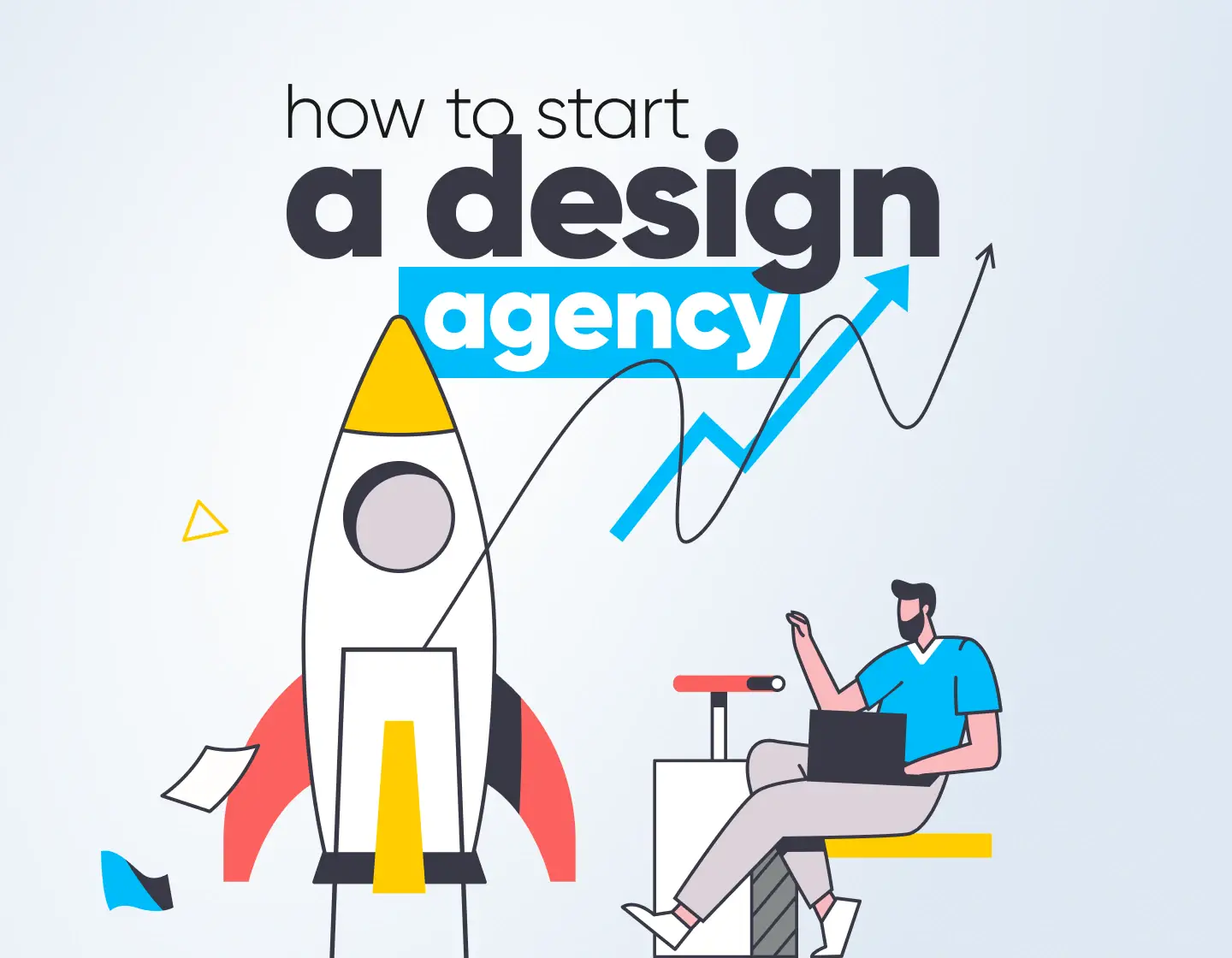
![How Much Does it Cost to Start a Design Agency? [+Tips Where to Save]](https://reallygooddesigns.com/wp-content/uploads/2025/04/cost_to_start_a_design_agency-193x150.webp)
